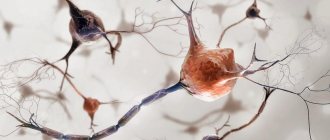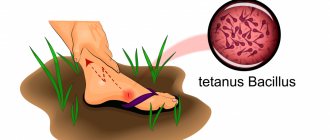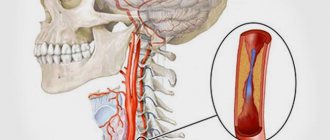Consultation via Skype or WhatsApp is available.
A person can experience a different range of emotions in a day. Mood can also change depending on the environment, events or well-being. This is fine. But sometimes the emotional system malfunctions, and affective disorders occur. They are characterized by excessive volatility and instability of mood for no apparent reason. In the evening a person went to bed in an elevated, happy mood, and in the morning there was no desire to live or work, the whole world was seen in black colors. If this condition lasts several weeks or months, then you need to consult a specialist.
This affective mental disorder, unlike mood swings in a healthy person, does not go away on its own. The patient's adequate perception of the world and himself is disrupted. Without treatment, he may lose his job, family, and friends. In advanced cases, there is a threat to life - suicide.
People who have close relatives or family members with mood disorders are at risk. The first episode can occur at any age. The triggering factor for the manifestation of latent anxiety-affective disorder may be:
- stressful situation;
- protracted conflict;
- mental stress;
- physical exhaustion;
- infection;
- severe intoxication of the body.
Subsequently, episodes of bad and/or happy excited mood occur without an external reason, on their own. At the same time, the depressive phase lengthens, that is, the person will be in a depressed mood more and more often.
general characteristics
Emotions are mental states that reflect a person’s attitude to current events, to people and to himself.
Emotional reactions consist of three components: a feeling of experience, changes in physiological processes and the appearance of external expressive complexes. In other words, a person feels an emotion (joy, anger, fear, sadness), experiences changes in the functioning of the body (sweating, heartbeat) and expresses his state with the help of facial expressions and gestures. Emotional states become pathological when their duration, intensity and content do not correspond to the situation and bring physical and psychological discomfort. Psycho-emotional disorders are characterized by unreasonable and inadequate affect, do not fit into the usual time frame, interfere with the performance of social functions, are perceived as painful or are not recognized by the person himself.
Development mechanism
In psychology, there are two groups of factors contributing to the development of psycho-emotional disorders: internal conditions and external influences. Internal conditions include features of the cognitive sphere: thoughts, ideas, fantasies. A negative assessment of events provokes negative emotions. Another group of internal factors are the psychophysiological characteristics of the body. The biological basis of emotions is the neurohumoral processes of the limbic and diencephalic systems of the brain, the exchange of serotonin, adrenaline, norepinephrine, and dopamine. An imbalance of these substances leads to the development of affective disorders.
Reactions to external environmental conditions can be innate and conditioned. Genetically embedded ways of responding - fear, aggression - are the basis for the formation of more complex emotional and behavioral patterns. During life, the development of affective disorders is facilitated by the processes of experiencing and consolidating traumatic experiences. Repetition or partial similarity of current events with past ones that caused negative experiences becomes the cause of psycho-emotional disorders.
Emotional disorders
Emotions are a special class of mental states that reflect, in the form of direct experience, a person’s general positive or negative attitude towards the world around him, people and himself. This experience is determined by the correspondence of the properties and qualities of objects and phenomena of reality to the specific needs and needs of the individual.
Definition
“emotion” itself comes from the Latin verb emovere - to move, excite, encourage, excite. Emotions always perform the function of motivating activity, therefore the emotional sphere of the individual is sometimes called emotional-volitional. The presence of emotions provides living organisms with a developed nervous system with more active, goal-oriented behavior to satisfy their needs.
Currently, it is recognized that emotions play a significant role in ensuring information interaction between the organism and the environment . The physiological basis of emotions is the activity of the nervous system, which compensates for the lack of information necessary to organize actions to satisfy needs during the life of the body.
Thus, emotion is the result of reflecting any human need and assessing the likelihood of its satisfaction under current conditions based on individual and genetic experience. The severity of the emotional state depends on the significance of the need and the lack of information necessary to satisfy it.
Negative emotions arise in a person when there is a shortage of information necessary to satisfy a need, while positive emotions arise when all the necessary information is available. The information theory of emotions pays special attention to the fact that the emergence of emotions is not associated with the presence of a need, not with a feeling of comfort or discomfort, but with an assessment of the prospect of satisfying the need.
Emotions have three components:
- effect (acute experience of pleasantness or unpleasantness, emotional stress, excitement);
- cognition (awareness of one’s state, labeling it with a word and assessing the prospects for satisfying a need);
- expression (external expression in bodily motor activity or behavior).
A relatively stable and comprehensive emotional state is called mood. Due to the fact that the human need sphere includes, in addition to biological, social needs, emotions that arise on the basis of relatively stable social and cultural needs are called feelings.
There are primary (basic) and secondary (complex) emotions. Primary emotions include: joy, sadness, anxiety, anger, disgust, shame, surprise. Secondary emotions include various mixtures of primary emotions, as well as emotions and their narrow interpretations (for example, pride is joy that contains elements of an internal causal attribution of one’s involvement in the occurrence of a positive event).
Disorders of the emotional sphere consist of painful experiences of certain emotional states. The main violation is a change in the emotional state towards depression or upliftment. Disturbances in the emotional sphere include hypothymia, hyperthymia, parathymia, as well as disturbances in the dynamics of emotions.
Definition
Hypotymia is a chronic decrease in emotionality in all three components (affect, cognition, expression), which is expressed in the suppression of all mental processes, a decrease in the overall activity of a person and his indifference to internal and external stimuli. The main emotional state during hypothymia is depression and melancholy (sometimes an angry-sad mood - dysphoria).
Definition
The extreme manifestation of hypothymia is depression - a chronically low mood, characterized by a pronounced feeling of inadequacy, a sense of despair, and pessimism.
Definition
One of the less pronounced manifestations of hypothymia is dysthymia - a chronically low, depressed mood when everything becomes difficult and nothing is enjoyable (anhedonia).
Dysthymia is characterized by dark thoughts, low self-esteem, feelings of hopelessness, and poor sleep; the person loses interest in the events of everyday life, has difficulty concentrating, and often gets tired, but there are no other disturbances in mental and social functioning. It often occurs in people who have experienced prolonged stress or sudden loss. Unlike depression, the condition usually worsens in the evening.
Dysthymic disorders are often interpreted as neurotic depression. However, there is no clear answer yet whether dysthymia is only a disorder of the emotional sphere or is it associated with personality (neurotic) changes.
Definition
Hyperthymia is a persistent emotional arousal, excessive emotionality.
The main emotional state during hyperthymia is euphoria: a feeling of very strong elation, accompanied by a feeling of unbridled optimism, well-being and increased motor activity. The term “mania” is used to denote the extreme manifestation of inappropriately elevated mood. Manic states are characterized by elevated mood, an increase in the volume and pace of mental and physical activity. There are two forms of manic disorders: hypomania and mania.
Hypomania is a mild degree of mania, when there is a constant slight rise in mood (at least for several days), increased energy and activity, a feeling of well-being and physical and mental productivity.
Increased sociability, excessive familiarity, increased sexuality, and a decreased need for sleep are also common. Accompanied by increased self-esteem and rude behavior. At the same time, concentration and attention suffer, which leads to significant disabilities.
Mania is an elevated mood inappropriate to the circumstances, which can vary from carefree cheerfulness to uncontrollable agitation.
Accompanied by hyperactivity, speech pressure and decreased need for sleep. Attention is dispersed, marked distractibility is noted, behavior is disinhibited, self-esteem is inflated, and ideas of grandeur arise. Perceptual disturbances may occur (brighter perception of colors, preoccupation with small details). The person takes extravagant, rash steps, spends money thoughtlessly, or becomes aggressive or sexual in inappropriate circumstances. In some cases, high spirits quickly give way to suspicion and irritation.
Definition
Parathymia is the simultaneous coexistence of two emotional states that are opposite in modality or the discrepancy between the emotional reaction and the cause that caused it (emotional inadequacy).
Most often, parathymia manifests itself in the “glass and wood” symptom, which is a combination of reduced emotionality with increased vulnerability, sensitivity to certain aspects of reality, while the strength and quality of the emotional reaction does not correspond to the significance of the stimulus.
Interesting
Disturbances in the dynamics of emotions are associated with states of emotional lability or rigidity. Emotional lability is characterized by rapid and frequent changes in mood. Emotional rigidity consists of slowing down the emotional reaction, getting stuck on one emotion even in the absence of the stimulus that caused it. The main disorders of emotional dynamics are bipolar affective disorder and cyclothymia.
Bipolar affective disorder is characterized by repeated episodes of mood swings and significant disturbances in activity (alternating states of mania and depression), when the increase in mood and activity is followed by a decrease in mood and activity.
Previously, bipolar affective disorder was interpreted as manic-depressive psychosis. Today it is believed that mood swings can be observed without psychotic symptoms.
Definition
Cyclothymia is a less severe state of chronic mood instability with numerous episodes of mild depression and mild elation. At times the mood may be normal. Mood changes with cyclothymia are usually perceived by a person as unrelated to current life events.
Disturbances in the emotional sphere can act as independent disorders, as a component of other mental disorders, and as consequences of states of significant frustration. Certain emotional states are recognized as pathological when their content, frequency of occurrence, intensity and stability are recognized by people as inadequate from a social or individual point of view.
In terms of content, emotional states are recognized as pathological when they do not correspond to the circumstances under which it is customary to experience such states. For example, they distinguish between content-specific (i.e., associated with certain circumstances) and non-specific emotions. An example is the distinction between anxiety as a general pointless vague feeling of tension and worry and fear as an emotional state that arises in the presence or anticipation of a dangerous or harmful stimulus.
Based on the frequency of occurrence, intensity and stability (duration), emotional states are recognized as pathological when they do not fit into the culturally accepted time frame for their acceptable manifestation and interfere with the performance of various social functions and responsibilities. Disorders are usually characterized by excessive frequency of occurrence, excessive intensity and significant duration of negative emotions with a lack of positive emotional states.
The recognition of emotions as pathological is also influenced by the degree of awareness and realism of emotional states. For example, anxiety can arise as a result of a meaningful forecast of the development of a situation or spontaneously, for no apparent reason. Anxiety may also be recognized by others as unjustified, i.e., not corresponding to the actual situation. In modern clinical psychology, the main role in the occurrence of emotional disorders is assigned to cognitive factors (thoughts, ideas, fantasies). It is necessary to distinguish between emotional states and emotional reactions. Emotional states arise in certain situations, so they are characterized by intensity and duration (stability).
Emotional reactions are associated with a short-term increase in the intensity of mental arousal under the influence of any strong stimulus. With the cessation of the activity of the stimulus, the emotional reaction also ceases. Emotional disorders are associated with changes in emotional states.
There are two groups of conditions for the occurrence of emotional disorders : external situational conditions, internal personally predetermined conditions. As a rule, life situations are perceived and interpreted by us, taking the form of thoughts, ideas or fantasies, colored by one or another emotion corresponding to the content of these thoughts. Consequently, emotions are associated with the content of our ideas about the situations in which we find ourselves.
These situations can be associated both with the private conditions of the individual’s life, and with epochal, cultural, economic and political events that influence the life and well-being of a person (or are perceived as influencing and having significance in the private life of the individual). In other words, what are the conditions of a person’s life from the point of view of the possibilities of satisfying his needs, so are the emotions that provide a subjective assessment of these conditions and motivation for activity in given circumstances.
Internal personally determined conditions are associated with the characteristics of the psychophysiological mechanisms of emotionality and the characteristics of the perception and cognitive processing of information about external events.
The psychophysiological basis of emotions is made up of neurochemical and neurohormonal processes in the diencephalic and limbic systems of the brain (hypothalamus, thalamus, reticular formation and amygdala). The main biochemical substances that provide emotions are serotonin, adrenaline, norepinephrine, dopamine, acetylcholine and opiates. Changing the balance of these substances in the body can lead to difficulties in the occurrence of certain emotional states. Thus, a decrease in the level of serotonin or norepinephrine in the brain leads to depression.
Interesting
The action of dopamine is associated with the possibility of positive emotions, and the action of adrenaline and norepinephrine - negative ones. Depending on the level of testosterone and cortisol, moderate levels of norepinephrine, adrenaline, serotonin, dopamine and opiates in the brain can deprive a person of intense emotionality (high testosterone and low cortisol) or provoke a state of confusion (low testosterone and high cortisol).
primary emotions is associated with the peculiarities of perception . A person has innate forms of emotions associated with responding to genetically predetermined external and internal environmental stimuli. Genetically determined emotional reactions can determine the emergence of complex emotions at a later age, since they are associated with “readiness” for the emergence of corresponding emotional states. Thus, we can talk about a genetically predetermined readiness to fear any objects of the external world (spiders, snakes, strangers).
A person's perception of reality controls the occurrence of these innate emotional reactions in actual behavior. In the early stages of life, the processes of conditioning certain emotional reactions and their consolidation (for example, under the influence of traumatic experiences in early childhood) play an important role. Certain emotional states can develop as habitual ones - based on the perception of repeating situations. Renewing situations lead to a gradual “switching off” of the cognitive processes of assessing similar situations and automating the immediate emotional response to the perception of a similar situation. Thus, a person who has experience of failures (for example, during class work) begins to feel anxiety just after entering the class. The formation of emotions is not reflected and the causes of the condition are not realized.
Evaluating information related to a perceived situation is the main function of emotions. Conscious assessment results in thoughts and expectations that have an emotional connotation. Negative assessments (and, accordingly, negative emotions) arise from certain systematic errors in processing information about the situation. These errors relate to the person's personality and the prospects for meeting his needs in this situation. Thinking errors that produce stable emotional states include:
- arbitrary conclusions from available information;
- selectively ignoring or neglecting some part of the information;
- excessive generalization of information (distributing it to a wider class of events);
- overestimation or underestimation of information;
- personalization of responsibility for success/failure in given conditions;
- strict dichotomy of information (“good/bad”, “black/white”, etc.).
Emotional states are also associated with the content of the self-concept (self-esteem, assessment of one’s past and future), causal attribution of personally significant events and expectations from upcoming events.
Since perception and cognition take an active part in the emergence and maintenance of emotional disorders, then, accordingly, emotions, activating thoughts and images corresponding to them in memory, support themselves, which ensures the stability of emotional disorders.
classes of emotional disorders are distinguished : anxiety disorders and mood disorders. At the same time, only mood disorders can be considered as independent disorders of the affective sphere. Anxiety disorders are more correctly defined not as affective, but as disorders of the predominantly cognitive component of emotionality (in the international classification of diseases they are classified within a special type of disorder - neurotic or stress-related).
Classification
Emotional disorders can be independent disorders or components of other mental illnesses. Pathological intensification of emotions is manifested by an increase in their intensity while maintaining adequate content. This group of disorders includes:
- Depression.
The structure of depressive states is dominated by low mood and depression. Patients feel anxiety and a feeling of inferiority. They perceive everyday difficulties as insurmountable and provoke crying, despondency, and reluctance to do anything. - Mania.
Manic states are manifested by elevated mood, accelerated rate of mental activity, and increased physical activity. A person becomes hyperactive, fussy, strives for achievements, to learn new things, but he lacks concentration and focus. - Euphoria.
In euphoria, people are dominated by carelessness, elevated mood, and infantility. Critical abilities and serious attitude to situations decrease. Passivity and excessive complacency do not allow you to perform daily duties.
Another option for psycho-emotional disorders is weakening of emotions. Regardless of the events taking place - joyful, sad, provoking aggression - people remain indifferent or experience weak feelings that do not correspond to the significance of the situation. Examples of such disorders:
- Emotional flattening.
With some mental illnesses, for example, with schizophrenia, emotions become impoverished - they become monotonous, primitive, and weakly expressed. In severe cases, only some manifestation of dissatisfaction in situations of discomfort remains. Other events - meetings with relatives, the loss of a loved one - do not evoke any emotions. - Apathy.
A state of apathy is typical for patients with depression. There is a general decrease in all emotional reactions. The patient is indifferent to what is happening, unable to experience joy, sadness, fear, anger. Often apathy is combined with a decrease in motor activity and abulia - pathological lack of will, the inability to begin any action.
When the mobility of emotions is impaired, a person’s ability to control the duration of the experience changes. This is manifested by stuckness, suddenness, or rapid uncontrollable changes in emotional states. There are several variants of the dynamic aspect disorder:
- Emotional lability.
With affective lability, emotions arise easily, quickly replace each other, and depend on fleeting external events or random memories. Such conditions are considered normal in early childhood, when a child’s tears suddenly give way to laughter, but in adults they are a sign of emotional disturbance. - Explosiveness.
This term refers to emotional explosiveness. After a period of calm, a person suddenly demonstrates anger, irritation, anger, and then just as quickly returns to a state of balance. During explosive outbreaks, aggression and provocation of conflicts are possible. - Inertia.
Synonyms for inertia are stuckness, stiffness. Such people experience one emotion for a long time, cannot be distracted and change it at will, and are in a state of irritability, melancholy, and anger.
The most striking psycho-emotional disorders are disturbances of adequacy. Inappropriate emotional manifestations are classified as pathological according to the content criterion: what a person feels has no connection with his thoughts or external events. This group includes:
- Inadequacy.
With emotional inadequacy, a person experiences and demonstrates emotions that are completely inappropriate for the situation. For example, laughter occurs in response to the news of the death of people, outbursts of anger when meeting a loved one (mother, friend). - Ambivalence.
People with schizophrenia often experience ambivalence of experiences - the simultaneous existence of opposing emotions. This condition is difficult for a healthy person to understand. Outwardly, it manifests itself as a constant, unconditional change of joy and melancholy, tenderness and anger, anger and tearful weakness. - Emotional tension.
Inappropriate experiences may include pointless fear, unmotivated anxiety, an inexplicable feeling of anger or dissatisfaction with oneself. In such conditions, people are in emotional tension, but cannot determine what is causing it. Usually they say: “the soul is restless”, “the soul suddenly sinks into the heels.”
Treatment of patients suffering from emotionally unstable personality disorders
In order to correctly select adequate therapy, it is necessary to identify the cause causing the disturbance of emotions. In mild cases, outpatient counseling and therapy in a day hospital are sufficient. In moderate to severe situations, hospitalization is required.
In the hospital, when diagnosing the patient, the main diagnosis is established. On this basis, individual treatment is prescribed.
Depending on the causative pathology, the treatment plan includes:
Pharmacotherapy. The most commonly used medications are psychotropic drugs - antidepressants, tranquilizers, antipsychotics, and symptomatic drugs.- Psychotherapy. For almost any disease, this type of treatment has a positive effect.
- Medical and rehabilitation measures. Recommended for people with social dysfunction.
After completing the main course, follow-up monitoring of the patient is advisable. Therefore, psychiatrists at the Leto clinic insist on periodic consultations with treated people.









